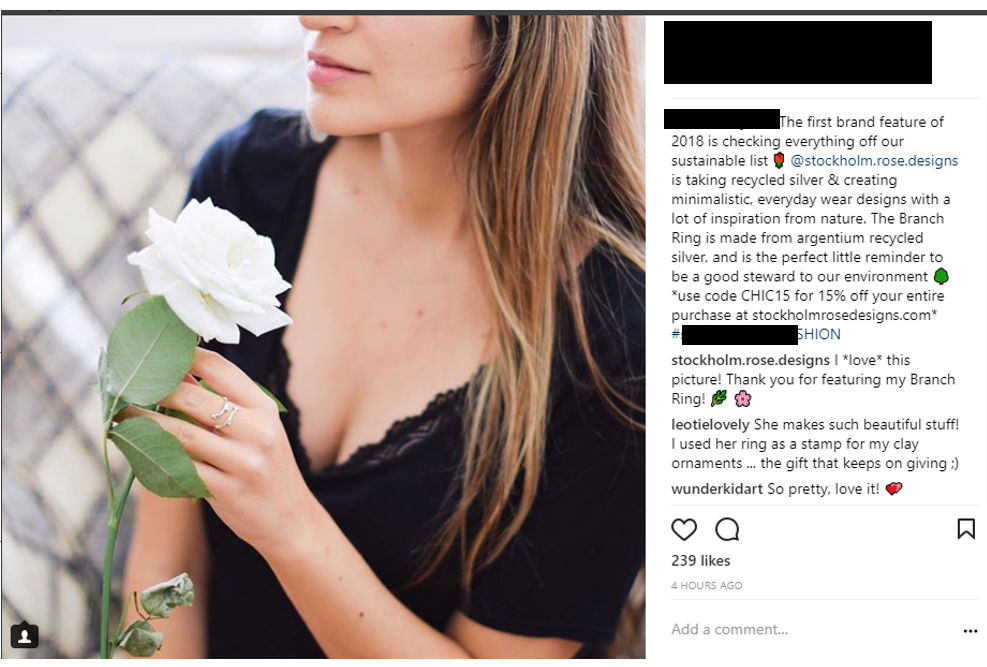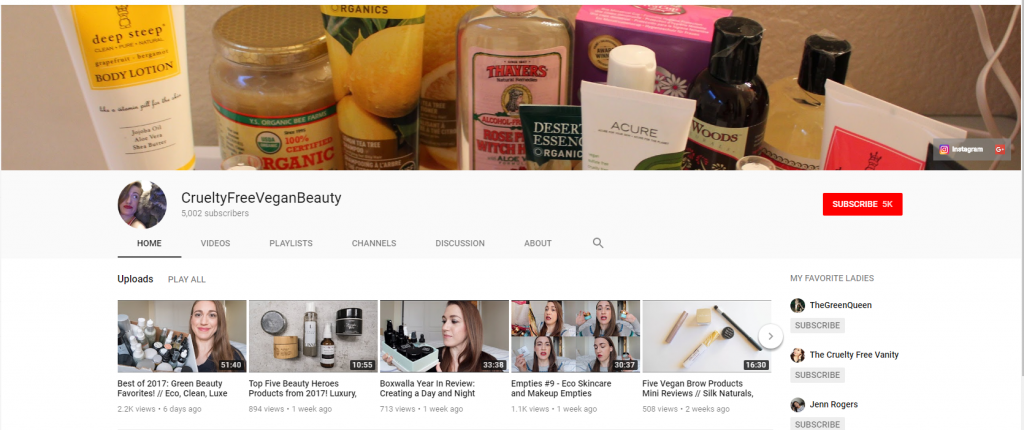The following blog post was originally posted on AM Days. I am speaking at AM Days, an affiliate management conference, in May. My session covers who to get those recruited influencers into performing affiliates. Click here for more details. And of course, this is an affiliate link because you know…it’s what I do and all. I can also offer you 15% off any 2-day session by using the code SPKROBBINS. If you click on this link, I will receive a commission to offset travel costs.
Looking to recruit an influencer who is also a top performing affiliate? The key to influencer recruitment success begins with your list.
As an affiliate manager, the evolution of influencers in the performance marketing space is a trend I have kept a close eye on. Early on, I saw the value of content affiliates but remained a minority among my peers. Now, the tide has changed. Influencer marketing has infiltrated the affiliate marketing world. Merchants see the value of influencers’ reviews for conversions and requests for affiliate managers to recruit influencers have grown exponentially. Affiliate managers now spend much of their time diligently crafting custom emails with the hopes of recruiting the next top performing influencer. However, many of these hours are wasted because of one common mistake. Many managers overlook the first essential step in the recruitment process: creating the prospect list. An unqualified list results in failure, no matter how brilliant your recruitment outreach.
Your prospect search should go beyond standard stats such as the number of followers, page ranking, and MOZ score. This post illustrates how to avoid common illusions and key components managers should look for to find influencers who will know how to connect, and as a result, sell to your target audience.
Below are six key steps to creating an influencer list that will recruit top performing affiliates.
#1 Pick A Niche
Finding the sweet spot with influencers isn’t just about follower counts, it is also about the niche. Niche influencers have authority, knowledge and trust with their audience. Those three components translate to affiliate revenue. We buy from people we trust. We trust people who are experts.
Prior to any list creation, I identify my top niches to recruit from. As an example, I manage an all-natural cosmetic brand. I look beyond the general niche of beauty bloggers and focus recruitment one level deeper. The more specific the niche I find, the higher conversion rates I see. One recruitment segment I’ve identified is vegan influencers. These micro-influencers may have smaller numbers in followers, but they have knowledge, passion and a sincere connection with their audience that results in an authentic representation of my merchant. Below is an example of one of my top performing influencers. While her numbers do not compete with Kardashian level influencers, her authenticity and engagement surpass those with higher followers.
#2 Go Beyond Numbers
It’s easy to get caught up in numbers when creating an influencer recruitment list. Seeing a number with the magical “k” after it, representing 10,000’s of eyes versus hundreds, is enough to make a manager salivate while calculating that 3% conversion to revenue. However, when recruiting influencers to affiliate marketing, bigger is not always better. The power of the micro-influencer, an influencer with less than 10,000 followers, is one you want to harness for your program. In my experience, the micro-influencer outperforms the mega influencer time and time again. I am not alone in this discovery. HelloSociety says engagement rates are 60% higher with micro versus mega influencers. in addition to higher engagement with your brand, you will also have higher response rates on your outreach with micro influencers. Smaller influencers are more likely to participate in affiliate marketing and listen to recommendations that translate to more sales.”
#3 Get An Engagement Reality Check
Now that you know your niche and have identified your ideal influencer, you need to be aware of engagement illusions commonly found within influencer marketing. Mere numbers are not enough to determine if an influencer will make a great affiliate. You need to look at the quality of their engagement.
Many influencers belong to more than one Facebook Group or community (pods) where they “trade” engagement to support one another. Here are three red flags to help identify this false engagement:
- Short comments such as “great post,” “too cute” or simply an emoji like a heart or smiley face.
- Posts with high Likes but low comments. It is easier to give a quick ‘like’ on a post than craft a relevant comment. If you see that an influencer’s posts regularly have hundreds of Likes but no Comments, this is a sign they participate in engagement pods.
- Accounts with high follower counts but low on Likes. Engagement should be proportionate to the number of followers. If the account has thousands of followers but Likes and Comments are in the 10’s, this influencer should not be added to your list.
Below is an example of an influencer who did not make my list because of their high follower to low likes and comments ratio. This influencer has over 82,000 followers with only 239 likes average for a post.
#4 Look Beyond Pictures
Continuing the conversation about engagement, when recruiting influencers, review which posts garner the most comments. Are the most popular posts personal ones with animals, quotes or kids? Does the influencer get engagement on sponsored, product specific or affiliate posts? What type of comments do the posts receive? For instance, if the comments refer to the individual’s beauty or the creative aspect of the photo, it will generate fewer sales than posts where the followers ask specific questions about the product.
#5 Look for Channels That Connect
Not all social media channels are created equal when it comes to affiliate marketing. Certain social media channels convert better than others. If you are looking for high conversions below are my four favorite channels in order of selling capability.
YouTube – The Google Darling does not disappoint. Videos allow for optimal search engine optimization and engagement, a winning combination. In addition, the influencer can easily place affiliate links in the video description and create a CTA requesting followers to click on it. Lastly, YouTube makes it easy to contact the influencer in one step by revealing an email address. Why, thank you YouTube! When a niche YouTube account appears in my search results, a small victory dance ensues.
Facebook – Facebook requires a little extra love but when applied properly it makes affiliate marketing magic. Within Facebook, my first choice is an active Facebook Group. Facebook Groups have higher engagement level and priority in the Facebook algorithm. Both of these factors result in increased views, clicks and sales.
Instagram – Instagram excels with brand exposure, but the UI makes it less likely that followers will click to purchase. The scrolling style of viewing posts as well as the link only being available in the bio lends itself to quick Likes and fewer clicks. However, I have seen some Instagram influencers succeed using Instagram Stories.Instagram Stories provide the personal one on one engagement feel that lends itself to conversions as well as an explanation on how followers can click on the affiliate link.
SnapChat – SnapChat is not my favorite channel for affiliate marketing. The short lifespan of posts eliminates the ability for passive revenue. However, the incredibly personal and engaging aspect of this platform means it should not be overlooked.Similar to Instagram Stories, affiliates can lead their followers to the affiliate link.
#6 Look the Blog
Social media only influencers struggle with affiliate marketing. Ideally, the influencers on your list will have a website as well as a social media presence. There are a few reasons for this:
Passive revenue – Affiliate marketing success is dependent on passive income for the program. If the affiliate link is only located in a specific post, or worse yet, just in a bio, the passive income will be non-existent. Social media posts don’t optimize for search engines the way blog posts do.
Details – A blog post lends itself to a more detailed explanation of why the influencer is recommending a product or brand. Keywords, alt tags on photos and other SEO tools are important as well. These additional details convert in affiliate marketing.
Of course, there is always an exception, and that exception is YouTube, Google’s social media darling. While I still prefer to work with influencers who have both a website AND a social media channel, I will take YouTube-only influencers. The in-depth content, high engagement and optimization potential for videos allow them to be an excellent standalone for affiliate marketing. The influencer below does not have a blog but remains a top performer due to niche and high-quality content.
Follow these six tips for list creation prior to sending out a single outreach email and watch your new affiliate revenue increase. Influencer recruitment has its challenges but is well worth the effort. With incremental revenue, increased brand equity and a higher percentage of new customers, a qualified influencer quickly turns into a top performer in your program.




